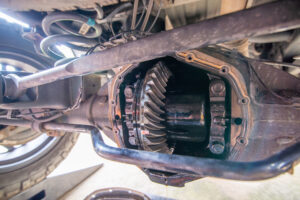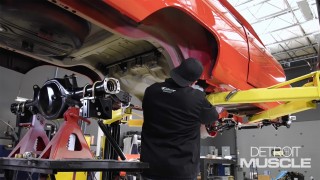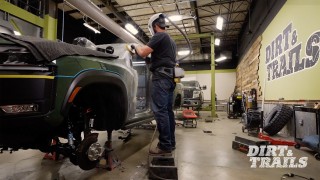Midsize Trucks Are Struggling To Meet IIHS Safety Standards For Rear-Seat Passengers

After a series of safety tests conducted by the Insurance Institute for Highway Safety (IIHS), it was concluded that many popular midsize trucks received very disappointing scores when it comes to protecting passengers seated in the rear of the cabin.
“Our updated moderate overlap front crash test proved to be challenging for small pickups,” says IIHS President David Harkey. “A common problem was that the rear passenger dummy’s head came dangerously close to the front seatback, and in many cases, dummy measurements indicated a risk of neck or chest injuries. All these things tell us that the rear seat belts need improvement.”
RELATED: This Unlucky Valet Driver Crashed a Pro Fighter’s Lamborghini Into Another Lamborghini
How Are The Midsize Trucks Graded?
The five midsize trucks used in the test were the Nissan Frontier, Ford Ranger, Chevrolet Colorado, Jeep Gladiator, and Toyota Tacoma. Of the five pickups, only the Nissan Frontier scored the highest with an “acceptable” rating. This means that none of the other four midsize trucks received an overall “good” rating. The Ford Ranger skated by with a rating of “marginal”, and the Chevrolet Colorado, Jeep Gladiator, and Toyota Tacoma all received “poor” ratings.
Using data from their tests in 2022, the IIHS concluded that the risk of fatal injuries following a collision is higher for belted occupants in the rear of the truck, rather than for those seated up front. The reasoning behind this isn’t because the back seat of these midsize trucks suddenly became less safe. It is due to adding improved airbags and seatbelts in the front that are not as available for the rear. In other words, the front seats have become more safe, while the back remains unchanged.
But despite these findings, the IIHS concludes that the rear seat remains the safest place for young children, mainly due to the fact that they can be injured by the deployment of an airbag.
With the new testing standards of the IIHS, in order for midsize trucks to receive a “good” rating, there cannot be any excessive risk of injury to the rear passenger’s head, neck, chest, or thigh. Rather, the dummy should be staying in the correct seating position at the time of the crash without sliding forward under the lab belt (aka “submarining”). The rear passenger’s head should also stay a safe distance away from the front seatback, as well as the rest of the truck’s interior.
Which Trucks Passed?
Upon the final results of the tests, all five midsize trucks received “good” ratings for protection of the front seat. However, the data suggested that drivers of the Jeep Gladiator and Toyota Tacoma were at higher risk of injury to their legs or feet.
Meanwhile, the data collected by the dummy seated in the back of the Colorado, Frontier, Ranger, and Tacoma all showed that the rear passenger’s head came dangerously close to the seatback of the front seat. The only exception was the Jeep Gladiator. However, the Gladiator does not feature a side curtain airbag for its rear passengers. This would increase the risk of injury from a hard impact on the truck’s interior.
The Ford Ranger was the only one of the five midsize trucks that had the dummy submarine under its lap belt, placing it above the pelvis and abdomen, which would put a real passenger at risk of serious internal injuries.
Overall, the Colorado, Gladiator, and Tacoma received “poor” ratings due to the moderate-to-likely risk of neck and chest injuries, and the Ranger received a score of “marginal” due to the passenger’s moderate risk of chest injuries.
So if you drive any one of these five midsize trucks, and you are a very cautious and defensive driver, then your driving skills should earn you an A+.









